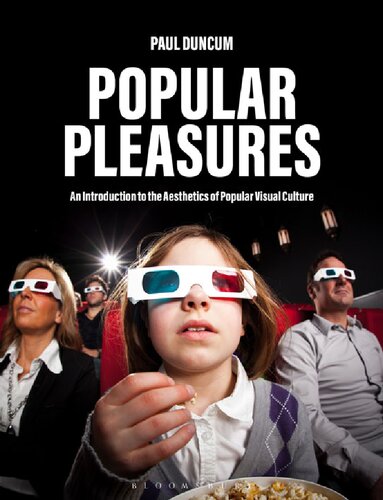Product desciption
Popular Pleasures An Introduction To The Aesthetics Of Popular Visual Culture Paul Duncum by Paul Duncum 9781350193406, 9781350193390, 9781350193437, 1350193402, 1350193399, 1350193437 instant download after payment.
Today’s many popular aesthetic pleasures – sentimental, violent, vulgar, humorous, erotic – have a long history. Popular culture is often thought to have emerged during the 19th century, but the same pleasures generated by today’s popular culture have excited our premodern ancestors for millennia. Popular imagery arouses interest from both the political right and left because both recognize its power to inform, and form, minds. An understanding of aesthetics in relation to visual culture is therefore vital because it is a major means by which ideology is inculcated, so to appreciate its power enhances our understanding of contemporary society.
Paul Duncum considers the historical, critical discourses, and socio-political issues raised by aesthetic pleasure in fifteen thematic chapters. Using illustrative examples from the past and the present and across cultures, and drawing principally upon art history, film and cultural studies, as well as philosophical aesthetics, chapters on ‘the vulgar’ explore the British seaside postcard, TV wrestling; in ‘the sentimental’ chapter, he looks at religious painting, Disney films; at Nazi propaganda, in ‘the horrific’; burlesque, and modern advertising, in ‘the erotic’. With this broad historical and international reach, the author demonstrates that the pleasure we draw from popular culture is long-standing and wide-ranging, and challenges the view that these promote the decline of cultural standards.
Popular Pleasures introduces readers to the view that popular culture can’t be condemned on the grounds of taste; aesthetic pleasures have often served, and continue to serve, highly problematic causes and issues, but pleasure derived from visual culture is part of our evolutionary inheritance, an important part of what it is to be human, and central to our understanding of contemporary society.
Defining aesthetics as sensory, emotional lure, each of fifteen chapters addresses a particular visual culture pleasure: a realistic style, the illusionistic, the bright and busy, the highly emotional, the sentimental, the vulgar, the violent, the horrific, the miraculous, the exotic, the erotic, the spectacular, the narrative, the formulaic, and the humorous. Each is considered in terms of its historical discourse by elite critics; its many and varied lures; and its problematic socio-political issues. Illustrative examples are drawn from the visual culture of the past, the present, and across cultures. Premodern fine art is shown often to appeal to the same pleasures as popular culture. Throughout, the pleasures of today’s popular culture are shown to be perennial and offer no justification for the frequent claim of declining cultural standards. The pleasures themselves are treated as value neutral with criticism directed at the causes they serve.


